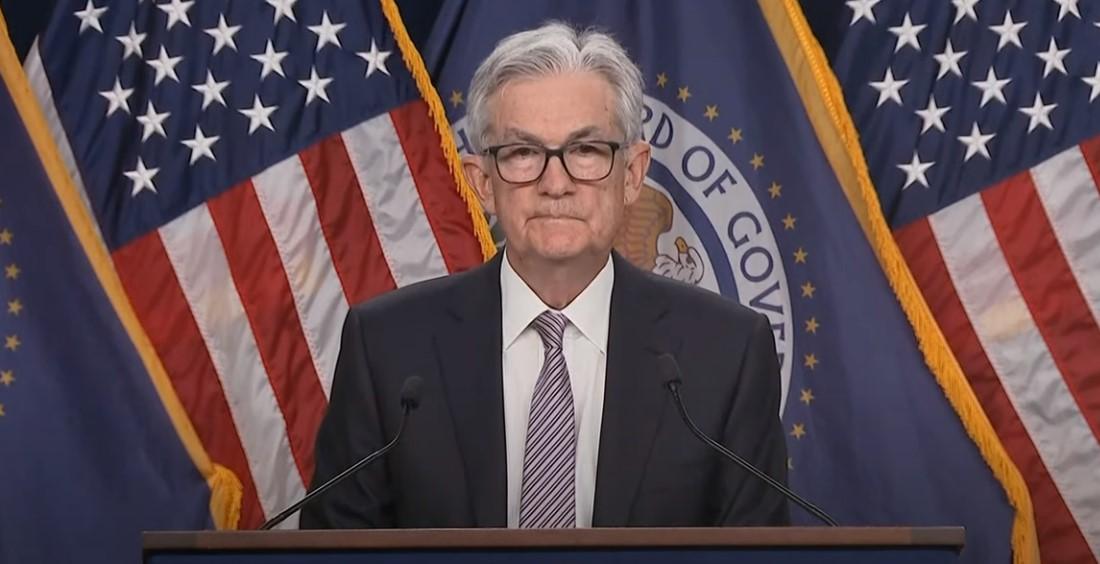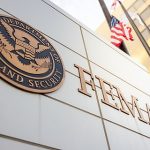
The Federal Reserve’s Federal Open Market Committee (FOMC) on Wednesday raised the target policy interest rate (the federal funds rate) to 5.25 percent, an increase of 25 basis points. With this latest increase, the target has increased 5 percent since February 2022. This is the highest rate reached since August 2007, shortly before a recession began in December of that year.
With an increase of only 25 basis points, the May meeting is the third month in a row during which the Fed has pulled back from its more substantial rate hikes of 2022. After four 75-basis-point increases in 2022, the committee approved a 50-point increase in December, followed by 25-point increases in February and March, and another on Wednesday.
Although CPI inflation has remained at or above five percent in recent months the FOMC has slowed down in its monetary tightening over the past four months. This is spite of the fact Powell today characterized price inflation as “well above” the two-percent target while concluding the Fed “has a long way to go” in terms of getting price inflation under control. Nonetheless, indications continue to mount that the Fed is maintaining its drift toward more dovish policy.
This was apparent in Powell’s comments on the state of the economy on Wednesday. The Fed uses most indications of economic weakness as excuses to embrace monetary easing, and the Fed now increasingly points to weakening growth. In his remarks, Powell said “the US economy slowed significantly last year” while noting the pace of growth “continued to be modest” into the spring. Although Powell, as usual, pointed to “strong” job growth numbers, he did not present this as a clear indicator of the overall economy. Instead, the discussion turned toward the Fed’s economic forecasts which, according to Powell, point to a “mild recession.” Sticking to the usual script however, Powell emphasized the word “mild” and predicted employment losses as a result of a coming recession would be “smaller than is typical in recessions.” Given that the Fed has demonstrated no prescience whatsoever in terms of forecasting inflation rates or economic growth in recent years, it’s unclear as to what gives Powell the confidence to make such a precise prediction.
The FOMC’s press release text also points toward a policy turn away from monetary tightening. For example, in March’s press release, the FOMC noted:
The Committee anticipates that some additional policy firming may be appropriate in order to attain a stance of monetary policy that is sufficiently restrictive to return inflation to 2 percent over time.
In contrast, this is what Wednesday’s statement reads:
In determining the extent to which additional policy firming may be appropriate to return inflation to 2 percent over time, the Committee will take into account the cumulative tightening of monetary policy, the lags with which monetary policy affects economic activity and inflation, and economic and financial developments.
Powell emphasized this change in this remarks during the press conference nothing that the committee no longer assumes additional “policy firming” is necessary. Rather, the committee will look into if additional firming is necessary in the future. In other words, FOMC policy and outlook could change at any time. The Fed has long since abandoned forward guidance, and now explicitly makes policy on a month-to-month basis. This, of course, makes sense given that the Fed has repeatedly been shown to lack any insight into economic trends, following 2022 debacle over “transitory” inflation and numerous Fed officials’ proclamation that no rate hikes would necessary before late in 2023.
A Looming Threat of Bank Failures
Perhaps the most recent—and alarming—demonstration of the Fed’s disconnect from reality comes from the Fed’s repeated failures to foresee or address mounting bank failures.
2023 has already seen three major banks failures. As The New York Post reported on Monday:
The three US banks that collapsed this year — First Republic, Silicon Valley Bank and Signature Bank of New York — had more combined assets under management than all 25 federally insured lenders that failed in 2008 at the onset of the Great Recession.
This is apparent in this helpful graph created by Mike Bostock, large bank failures in the early days of the 2007-2008 crises were followed by hundreds of failures at smaller banks. If 2023-2024 follows a pattern similar to that of 2007-2008, the banking system is in a lot of trouble.
Perhaps in an attempt to calm the banking sector, Powell was sure to declare at the FOMC press conference that the banking system is “sound and resilient.” Yet, within hours of the press conference, two more banks were showing signs of extreme stress. Regional banks PacWest and Western Alliance saw their stock prices crash in after-hours trading. As of 7 PM Eastern on Wednesday, PacWest’s stock is down 55 percent, and Western Alliance is down by 20 percent. In other words, Powell professed confidence in the banking system required only a few hours to look very misplaced, indeed. Both banks have recently reported increasing threats to profitability.
Complacency about the Banking sector appears to be fashionable at the Fed, however. In today’s press conference, CNBC’s Steve Liesman—the only reporter who asks tough questions at these press conferences—asked Powell why the Fed has done so little to address the increasingly obvious structural weaknesses in the banking sector. (Liesman asked a similar question at the March meeting, to which Powell responded with a deer-in-the-headlights look.) Powell responded to Liesman’s question with no details except to insist the Fed has the situation under control and to say that things are fine because banks are actively seeking more liquidity.
What Powell failed to mention is that this search for liquidity is becoming more and more difficult the higher interest rates rise. As the Fed allows rates to return to more normal levels after a decade of financial repression, depositors are moving their money elsewhere in a search for yield above the paltry interest that banks pay in deposits.
The Fed’s Low-Interest Bubble
There is no clear way out of this for banks, however. The banking sector has become extremely reliant on business models that assume extremely low interest rates. If interest rates continue to head upward, banks will increasingly find themselves in a position of having to pay out interest at higher rates than they can collect on the older low-interest assets on the banks’ balance sheets. In other words, banks will find themselves with negative cash flow and will become insolvent. Given Powell’s response to Liesman’s question, it is also apparent the Fed has no strategy here except to pump more liquidity—i.e., easy money—into the banking system. Given that price inflation is already well above targets, and at a 35-year high, it’s unclear how the Fed thinks it can do this without making price inflation further entrenched.
After all, the Fed’s target policy rate remains quite low compared to price inflation. Historically—prior to 2008—the policy rate tended to exceed the CPI inflation rate except in recessionary periods when the Fed was explicitly attempting to “stimulate” the economy out of a recession. Since 2008, however, the relationship has reversed and Fed has continually pushed the target rate below CPI price inflation. With this latest rate hike, the FOMC brings the target rate slightly above the CPI inflation rate (for April) of 5 percent. Powell is likely right that the Fed still has a long way to go before bringing inflation down near the two-percent target.
If the Fed is serious about brining down price inflation, however, it’s difficult to see how the Fed can do that while also guaranteeing more liquidity to an obviously fragile banking system. We may be on the leading edge of a new wave of bank failures, the total size of which could dwarf the bank failures of 2008.




